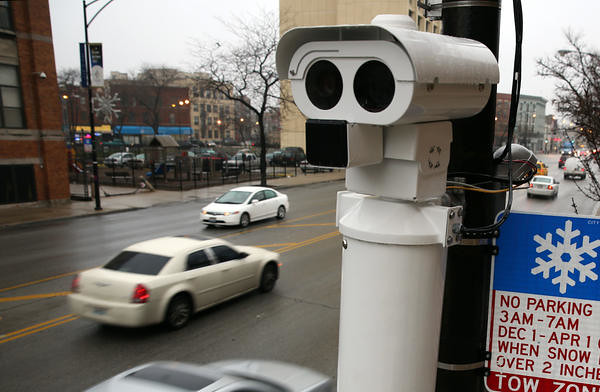Yesterday’s Sun-Times piece on speed camera data obtained via a Freedom of Information Act focused on the fact that the cams haven’t brought in much cash for the city, assuming that must be a big disappointment for Mayor Emanuel. However, the real story is that the program seems to be doing an excellent job of reducing speeding.
As I’ve written many times, I really don’t care whether the cameras were intended as a money grab. If automated ticketing is successful in encouraging safe driving and punishing lawbreakers, any cash raised to patch the city’s budget hole is gravy.
The Sun-Times piece fixates on the fact that the 92 cameras placed near 43 parks and school have only generated $3.7 million in fines, and just $1.5 million of that revenue has been collected, since installation began in September. Emanuel projected they would raise $70 million, which would be earmarked for traffic safety and violence prevention efforts to protect kids, such as crossing guards and crosswalks, plus after-school and job-training programs.
But the low rate of ticketing suggests that the cameras are doing their most important job, encouraging motorists to respect the speed limit, which helps prevent injuries and deaths. The paper reports that the average number of drivers recorded speeding each day has dropped at almost every location, and there have been huge drops at some sites.
At a City Hall budget hearing in November, then-transportation chief Gabe Klein predicted as much. "I know there are a lot of skeptics out there, but it's working, and the number of tickets is pretty small because we have so much education out there,” he said. “In some cases, speeding drops by 90 percent by the time tickets actually go out [after the warning period ends.]"
In fact, the average number of speeders per day dropped by 97 percent at McKinley Park, 2080 West Pershing, from 861 in September to only 28 in March. Horner, Challenger, Gompers, McKinley, Humboldt, Garfield, Marquette, Abbott, Riis and Gage parks have also seen declines of 93 percent or more.
Those are amazing numbers, but the Sun-Times paints the program as a failure:
The mayor has insisted his plan to put cameras in up to 300 locations is about saving lives, not raising sorely needed revenue. Unless there’s a dramatic turnaround, Emanuel’s words are likely to prevail. That would blow a hole in the city’s 2014 budget at a time when cash-strapped Chicago can least afford it.
While tens of millions of dollars in ticket money would have been a great windfall for youth safety programs, preventing crashes is the far more important function of the cameras. Furthermore, collisions that kill and injure people and damage property are very expensive for the city. It’s entirely possible that, by preventing crashes, the cams will provide more than $70 million in savings in first responder, hospital, and infrastructure repair bills, and other monetary costs associated with Chicago’s speeding epidemic.






